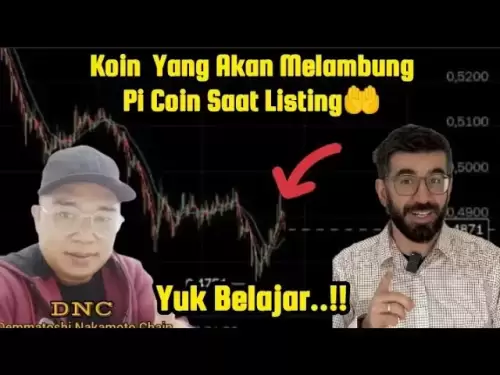-
 Bitcoin
Bitcoin $105,734.0170
-1.51% -
 Ethereum
Ethereum $2,414.7328
-3.26% -
 Tether USDt
Tether USDt $1.0002
0.00% -
 XRP
XRP $2.1748
-2.62% -
 BNB
BNB $647.5663
-1.72% -
 Solana
Solana $148.1710
-3.81% -
 USDC
USDC $0.9999
-0.01% -
 TRON
TRON $0.2799
-0.02% -
 Dogecoin
Dogecoin $0.1586
-4.17% -
 Cardano
Cardano $0.5440
-5.03% -
 Hyperliquid
Hyperliquid $37.0680
-6.59% -
 Bitcoin Cash
Bitcoin Cash $501.2052
-4.01% -
 Sui
Sui $2.6846
-3.47% -
 Chainlink
Chainlink $12.8488
-3.38% -
 UNUS SED LEO
UNUS SED LEO $8.9480
-1.51% -
 Avalanche
Avalanche $17.2059
-3.87% -
 Stellar
Stellar $0.2270
-4.75% -
 Toncoin
Toncoin $2.7889
-3.93% -
 Shiba Inu
Shiba Inu $0.0...01126
-1.76% -
 Litecoin
Litecoin $83.6893
-3.36% -
 Hedera
Hedera $0.1445
-4.49% -
 Monero
Monero $312.4014
-2.58% -
 Dai
Dai $1.0000
0.00% -
 Ethena USDe
Ethena USDe $1.0001
-0.01% -
 Polkadot
Polkadot $3.2920
-3.32% -
 Bitget Token
Bitget Token $4.4629
-1.81% -
 Uniswap
Uniswap $6.5386
-8.42% -
 Aave
Aave $260.3780
-6.01% -
 Pepe
Pepe $0.0...09308
-4.54% -
 Pi
Pi $0.4864
-3.04%
How to get cheap SOL through staking or lending?
Staking or lending SOL can help acquire it cheaper; staking secures the network with rewards, while lending earns interest but carries higher risks.
Apr 06, 2025 at 03:56 am

Understanding Solana (SOL) and its Utility
Solana (SOL) is the native cryptocurrency of the Solana blockchain, a high-performance platform designed for decentralized applications (dApps) and smart contracts. Its speed and scalability are key selling points, attracting developers and users. However, like any cryptocurrency, its price fluctuates. Acquiring SOL cheaply involves leveraging its inherent functionalities, primarily through staking and lending.
Staking SOL for Rewards
Staking is a crucial part of Solana's consensus mechanism. By locking up your SOL tokens in a validator node, you help secure the network and earn rewards in the form of additional SOL. The rewards are paid out periodically, effectively increasing your SOL holdings over time. This is one way to potentially "buy" SOL cheaper than the market price, as your earnings offset the initial investment cost.
- Find a reputable Solana validator: Research and select a validator with a proven track record of uptime and security. Avoid validators with questionable reputations.
- Delegate your SOL: Transfer your SOL to the chosen validator's address. The process usually involves using your Solana wallet.
- Earn staking rewards: Your rewards will accrue over time, depending on the validator's performance and the network's overall activity. The frequency of reward payouts varies.
- Understand the risks: While generally safe, staking involves risks, including validator downtime or potential slashing penalties for malicious actions (though unlikely for legitimate users).
Lending SOL for Interest
Lending your SOL on decentralized finance (DeFi) platforms allows you to earn interest on your holdings. These platforms act as intermediaries, matching lenders with borrowers. You earn interest for providing liquidity to the market. This approach offers a different avenue to acquire SOL indirectly, as the interest earned can be used to purchase more SOL.
- Choose a reputable DeFi platform: Research and select a platform with a strong security track record and a transparent fee structure. Security audits are crucial.
- Deposit your SOL: Transfer your SOL to the chosen platform's designated address. The process usually involves connecting your wallet.
- Earn interest: Your interest will accrue over time, depending on the platform's lending rates and market demand. Interest rates can fluctuate.
- Understand the risks: DeFi platforms carry inherent risks, including smart contract vulnerabilities and potential hacks. Always research thoroughly before using any platform.
Comparing Staking and Lending
Both staking and lending offer opportunities to acquire SOL indirectly, but they differ in several key aspects. Staking is generally considered less risky, but the rewards might be lower. Lending can offer higher returns, but carries a greater risk of smart contract exploits or platform failures. The choice depends on your risk tolerance and financial goals.
Understanding the Risks Involved
It's crucial to understand that neither staking nor lending guarantees profit. Market conditions and platform performance significantly impact returns. Always conduct thorough research and only invest what you can afford to lose. The cryptocurrency market is volatile, and prices can fluctuate dramatically. Diversification is essential to mitigate risk. Don't put all your eggs in one basket.
Maximizing Returns
To maximize your returns, consider these factors:
- Research validators and DeFi platforms carefully: Look for platforms with strong security measures, transparency, and a positive track record.
- Understand the fees involved: Both staking and lending platforms charge fees, which can impact your overall returns.
- Monitor your investments regularly: Keep track of your earnings and the performance of your chosen validator or platform.
- Stay informed about market trends: Understanding market fluctuations can help you make informed decisions.
Frequently Asked Questions
Q: Is staking SOL risk-free?
A: No, staking involves risks, including validator downtime and potential slashing penalties (though unlikely for legitimate users). However, it is generally considered less risky than lending.
Q: How much can I earn by staking SOL?
A: The annual percentage yield (APY) for staking SOL varies depending on the validator and network conditions. It can range from a few percent to over 10%, but this is not guaranteed.
Q: Are DeFi platforms safe for lending SOL?
A: DeFi platforms carry inherent risks, including smart contract vulnerabilities and potential hacks. Thorough research and due diligence are crucial before using any platform.
Q: What are the differences between staking and lending SOL?
A: Staking involves securing the network and earning rewards, while lending involves providing liquidity to a DeFi platform and earning interest. Staking is generally less risky, but potentially less rewarding than lending.
Q: How do I choose a reputable validator or DeFi platform?
A: Look for platforms with strong security measures, transparency, positive community reviews, and a proven track record. Consider factors like security audits and the team behind the project. Avoid platforms with questionable reputations or unclear terms of service.
Q: Can I lose my SOL by staking or lending?
A: While unlikely in staking with reputable validators, there's always a risk of loss in the cryptocurrency market. In lending, the risk is higher due to smart contract vulnerabilities and platform risks. You could lose some or all of your investment.
Q: How long does it take to earn significant returns from staking or lending SOL?
A: The time it takes to earn significant returns depends on the APY, the amount of SOL you stake or lend, and market conditions. It's a long-term strategy rather than a get-rich-quick scheme.
Q: What are the tax implications of staking and lending SOL?
A: The tax implications of staking and lending rewards vary depending on your jurisdiction. It's advisable to consult with a tax professional to understand your specific tax obligations.
Disclaimer:info@kdj.com
The information provided is not trading advice. kdj.com does not assume any responsibility for any investments made based on the information provided in this article. Cryptocurrencies are highly volatile and it is highly recommended that you invest with caution after thorough research!
If you believe that the content used on this website infringes your copyright, please contact us immediately (info@kdj.com) and we will delete it promptly.
- Instant Payments, Fintech, and USDC Stablecoins: A New Era of Finance?
- 2025-07-02 18:30:12
- XRP, Ripple Labs, and Escrow: Decoding the Latest Moves
- 2025-07-02 18:30:12
- Crypto Summit, White House, and Bitcoin Solaris: A New Era?
- 2025-07-02 18:50:12
- DeFi, Aptos, and Token Generation: A New Era?
- 2025-07-02 18:50:12
- Peter Schiff, Bitcoin, and the Gold Hedge: A Contrarian's Crypto Turn?
- 2025-07-02 19:10:13
- Paddington Coin Mania: Rare Find or Fool's Gold? The £10K Question!
- 2025-07-02 19:10:13
Related knowledge
How to customize USDT TRC20 mining fees? Flexible adjustment tutorial
Jun 13,2025 at 01:42am
Understanding USDT TRC20 Mining FeesMining fees on the TRON (TRC20) network are essential for processing transactions. Unlike Bitcoin or Ethereum, where miners directly validate transactions, TRON uses a delegated proof-of-stake (DPoS) mechanism. However, users still need to pay bandwidth and energy fees, which are collectively referred to as 'mining fe...
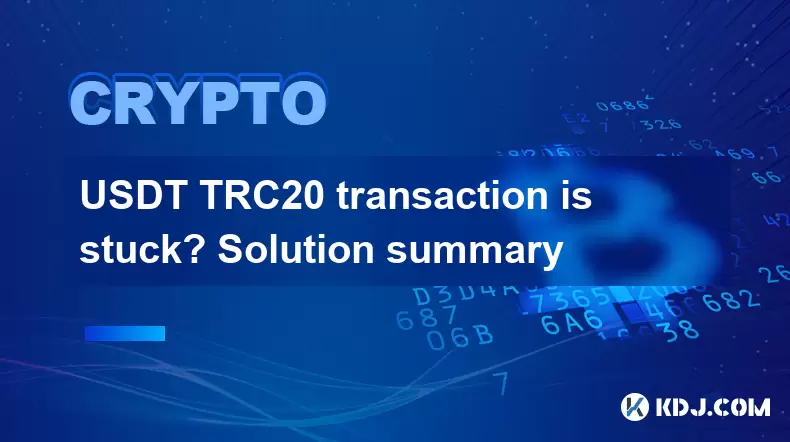
USDT TRC20 transaction is stuck? Solution summary
Jun 14,2025 at 11:15pm
Understanding USDT TRC20 TransactionsWhen users mention that a USDT TRC20 transaction is stuck, they typically refer to a situation where the transfer of Tether (USDT) on the TRON blockchain has not been confirmed for an extended period. This issue may arise due to various reasons such as network congestion, insufficient transaction fees, or wallet-rela...
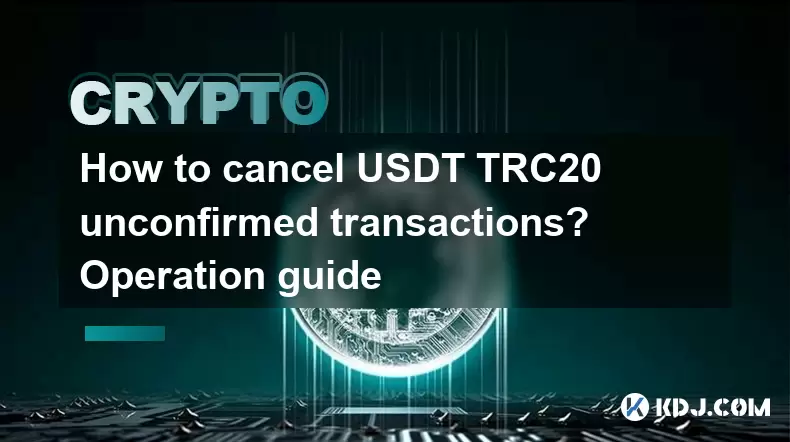
How to cancel USDT TRC20 unconfirmed transactions? Operation guide
Jun 13,2025 at 11:01pm
Understanding USDT TRC20 Unconfirmed TransactionsWhen dealing with USDT TRC20 transactions, it’s crucial to understand what an unconfirmed transaction means. An unconfirmed transaction is one that has been broadcasted to the blockchain network but hasn’t yet been included in a block. This typically occurs due to low transaction fees or network congestio...
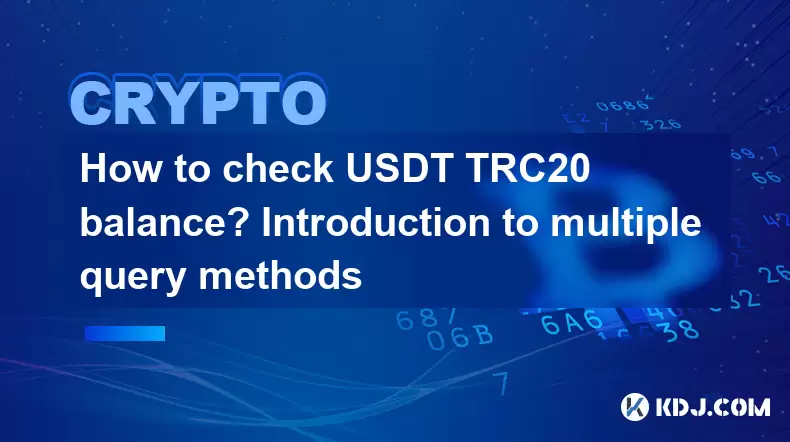
How to check USDT TRC20 balance? Introduction to multiple query methods
Jun 21,2025 at 02:42am
Understanding USDT TRC20 and Its ImportanceUSDT (Tether) is one of the most widely used stablecoins in the cryptocurrency market. It exists on multiple blockchain networks, including TRC20, which operates on the Tron (TRX) network. Checking your USDT TRC20 balance accurately is crucial for users who hold or transact with this asset. Whether you're sendi...
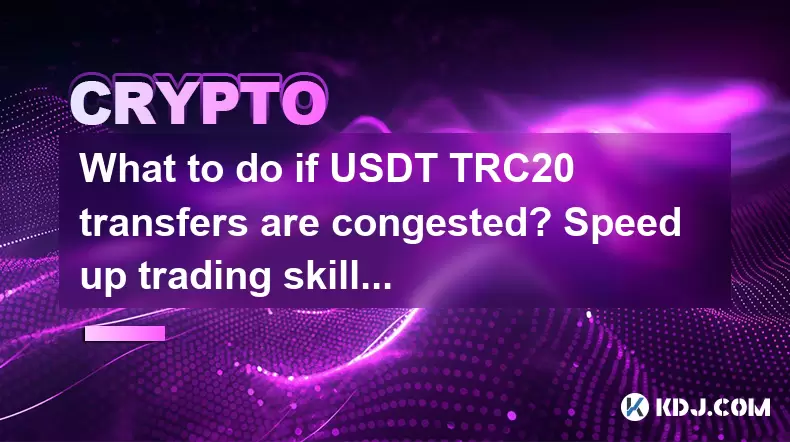
What to do if USDT TRC20 transfers are congested? Speed up trading skills
Jun 13,2025 at 09:56am
Understanding USDT TRC20 Transfer CongestionWhen transferring USDT TRC20, users may occasionally experience delays or congestion. This typically occurs due to network overload on the TRON blockchain, which hosts the TRC20 version of Tether. Unlike the ERC20 variant (which runs on Ethereum), TRC20 transactions are generally faster and cheaper, but during...
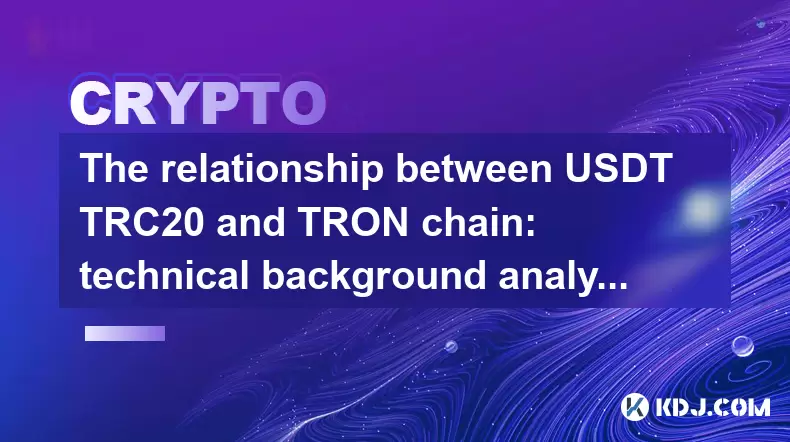
The relationship between USDT TRC20 and TRON chain: technical background analysis
Jun 12,2025 at 01:28pm
What is USDT TRC20?USDT TRC20 refers to the Tether (USDT) token issued on the TRON blockchain using the TRC-20 standard. Unlike the more commonly known ERC-20 version of USDT (which runs on Ethereum), the TRC-20 variant leverages the TRON network's infrastructure for faster and cheaper transactions. The emergence of this version came as part of Tether’s...

How to customize USDT TRC20 mining fees? Flexible adjustment tutorial
Jun 13,2025 at 01:42am
Understanding USDT TRC20 Mining FeesMining fees on the TRON (TRC20) network are essential for processing transactions. Unlike Bitcoin or Ethereum, where miners directly validate transactions, TRON uses a delegated proof-of-stake (DPoS) mechanism. However, users still need to pay bandwidth and energy fees, which are collectively referred to as 'mining fe...

USDT TRC20 transaction is stuck? Solution summary
Jun 14,2025 at 11:15pm
Understanding USDT TRC20 TransactionsWhen users mention that a USDT TRC20 transaction is stuck, they typically refer to a situation where the transfer of Tether (USDT) on the TRON blockchain has not been confirmed for an extended period. This issue may arise due to various reasons such as network congestion, insufficient transaction fees, or wallet-rela...

How to cancel USDT TRC20 unconfirmed transactions? Operation guide
Jun 13,2025 at 11:01pm
Understanding USDT TRC20 Unconfirmed TransactionsWhen dealing with USDT TRC20 transactions, it’s crucial to understand what an unconfirmed transaction means. An unconfirmed transaction is one that has been broadcasted to the blockchain network but hasn’t yet been included in a block. This typically occurs due to low transaction fees or network congestio...

How to check USDT TRC20 balance? Introduction to multiple query methods
Jun 21,2025 at 02:42am
Understanding USDT TRC20 and Its ImportanceUSDT (Tether) is one of the most widely used stablecoins in the cryptocurrency market. It exists on multiple blockchain networks, including TRC20, which operates on the Tron (TRX) network. Checking your USDT TRC20 balance accurately is crucial for users who hold or transact with this asset. Whether you're sendi...

What to do if USDT TRC20 transfers are congested? Speed up trading skills
Jun 13,2025 at 09:56am
Understanding USDT TRC20 Transfer CongestionWhen transferring USDT TRC20, users may occasionally experience delays or congestion. This typically occurs due to network overload on the TRON blockchain, which hosts the TRC20 version of Tether. Unlike the ERC20 variant (which runs on Ethereum), TRC20 transactions are generally faster and cheaper, but during...

The relationship between USDT TRC20 and TRON chain: technical background analysis
Jun 12,2025 at 01:28pm
What is USDT TRC20?USDT TRC20 refers to the Tether (USDT) token issued on the TRON blockchain using the TRC-20 standard. Unlike the more commonly known ERC-20 version of USDT (which runs on Ethereum), the TRC-20 variant leverages the TRON network's infrastructure for faster and cheaper transactions. The emergence of this version came as part of Tether’s...
See all articles
























